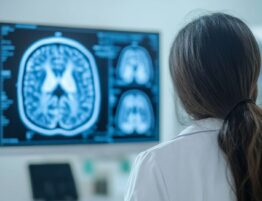Headaches and migraines are common problems that affect millions of Americans every year. While these terms may seem similar, they represent completely different neurological conditions with distinct underlying mechanisms. The duration, intensity, and symptoms vary significantly between the two, making proper identification essential for effective treatment.
Regular headaches often have identifiable triggers and resolve relatively quickly with minimal intervention. These episodes typically respond well to rest, hydration, and over-the-counter medications. Migraines, however, represent complex neurological disorders that can severely impact quality of life. They involve changes in brain chemistry and blood vessel function that create debilitating symptoms lasting much longer than typical headaches.
Understanding the difference between migraine vs headache is crucial for proper medical management and long-term health outcomes. Headaches typically pass within hours with basic pain relief measures and rarely cause serious complications or interfere significantly with daily activities. Migraines can have lasting effects that extend well beyond the pain episode itself, often causing significant fatigue, cognitive difficulties, and sensitivity that can persist for days after the initial attack subsides.
Types of Headaches: Defining Migraine vs Tension Headache and More
What exactly is a migraine, and how does it differ from a regular headache? A migraine is characterized by intense, throbbing pain that often affects one side of the head. Migraines frequently come with additional symptoms like nausea, sensitivity to smells, and light sensitivity.
It’s important to understand the different types of headaches and their unique characteristics. Each type has distinct symptoms and effects on the body. Studying these differences is crucial for providing personalized, high-quality care. Here are the main types:
- Cluster Headache. These headaches cause extreme, stabbing pain but occur in distinct patterns or “clusters” over weeks or months, followed by remission periods. The pain comes in episodes that can last from 15 minutes to 3 hours and frequently disturb sleep cycles. The intense, burning pain typically centers around one eye or temple, often causing the affected eye to become red and watery.
- Tension Headache. This is the most common type of headache, affecting up to 90% of adults at some point in their lives. These headaches cause a characteristic band-like squeezing or pressing sensation around the head, often described as feeling like wearing a tight hat. They frequently result from muscle tension in the neck, shoulders, and scalp due to stress, poor posture, or overexertion. Extended computer use, prolonged reading, and blue light exposure from screens can trigger this type of pain by causing eye strain and neck stiffness.
- Secondary Headaches. These headaches serve as warning signs of underlying medical conditions or result from external factors affecting the body. They often indicate problems such as sinus infections, high blood pressure, medication overuse, head injuries, or more serious conditions requiring immediate medical attention. Secondary headaches represent a complex category that requires thorough medical evaluation to identify and treat the root cause rather than just managing symptoms.
Migraine Symptoms and Causes You Should Know
Migraines are among the most debilitating neurological conditions that people face, ranking as the third most prevalent illness worldwide. Many individuals experience serious consequences from untreated migraines, including missed work days, strained relationships, and decreased overall life satisfaction. These complex headaches involve abnormal brain activity that affects nerve signals, brain chemicals, and blood vessels, causing severe pain that can completely disrupt normal functioning.
Research shows that migraines affect women three times more often than men, largely due to hormonal influences throughout the menstrual cycle, pregnancy, and menopause. The condition often runs in families, with genetics playing a significant role in determining susceptibility. Environmental and lifestyle factors can then trigger episodes in genetically predisposed individuals.
For proper migraine treatment and management, it’s essential to consult qualified medical specialists who understand the complexity of this neurological condition. Neurologists and headache specialists can review your comprehensive medical history, identify patterns, and prescribe effective, personalized treatment plans. Understanding migraine symptoms and recognizing early warning signs helps people seek help quickly and address episodes before they reach peak intensity. It’s equally important to learn about personal triggers, as avoiding known precipitating factors can significantly reduce the frequency and severity of future attacks.
Common Migraine Symptoms:
- Severe throbbing pain, typically on one side of the head
- Nausea and sometimes vomiting
- Sensitivity to smells, sounds, and bright lights
- Blurred vision or visual disturbances, including blind spots
- Irritability, fatigue, and exhaustion following an attack
Common Causes of Migraines:
- Genetic predisposition runs in families
- Hormonal changes, particularly in women during menstrual cycles
- Dietary triggers including alcohol, excessive caffeine, and chocolate
- Chronic stress, sleep problems, and emotional tension
- Environmental factors like strong odors, weather changes, and barometric pressure shifts
Tension Headaches and Regular Headaches: Characteristics and Diagnosis
Tension headaches are common painful conditions that differ significantly from migraines in their intensity and impact. These headaches are typically less severe than migraines but still affect overall well-being. Most tension headaches respond well to basic treatments.
Proper rest, adequate hydration, and over-the-counter pain medications usually provide relief. Understanding the characteristics and getting proper diagnosis helps reduce pain and maintain good health.
Key Characteristics of Tension Headaches:
- Dull, aching pain with a squeezing or pressing sensation around the head
- Pain that spreads across the entire head rather than focusing on one side
- Usually no accompanying nausea, vision problems, or light sensitivity
- Mild to moderate intensity that doesn’t worsen with normal activities
- Often occurs after stressful days and responds well to basic pain relievers
Medical consultation and proper diagnosis are necessary to identify specific triggers. Healthcare providers can help determine the nature of your pain and rule out serious underlying causes. Sometimes neck or back problems can contribute to tension headaches. Comprehensive testing helps doctors diagnose potential conditions and prescribe appropriate treatments.
Headache Diagnosis: How to Identify Migraine vs Regular Headache
Medical consultation and proper diagnosis are essential for understanding the differences between headache types. Doctors review medical histories, gather patient information, and investigate underlying causes. Professional diagnosis helps rule out serious conditions and ensures appropriate treatment.
Accurate headache diagnosis is crucial for prescribing the right treatment approach. It helps distinguish migraines from regular headaches through systematic evaluation. Here are the key diagnostic methods:
- Medical History Review. Doctors ask about symptoms, triggers, duration, and frequency of headaches. They also inquire about external factors that might contribute to pain episodes.
- Headache Diary. Patients keep detailed records to track patterns, triggers, and frequency. This documentation is essential for accurate diagnosis and effective treatment planning.
- Physical Examination. Comprehensive physical exams help rule out neurological problems and other potential causes of headache pain.
- Advanced Imaging. In complex cases, doctors may order MRI or CT scans to examine brain health and structure. These tests help rule out structural abnormalities and neurological diseases.
Migraine Treatment Options: Effective Relief and Management Strategies
Seeking medical attention can prevent further complications from migraines and headaches. When dealing with migraines, proper diagnosis and treatment are critically important. Healthcare providers evaluate patients and consider various treatment approaches.
Migraine treatment options focus on preventing attacks and minimizing their frequency and severity. Modern medical approaches combine multiple strategies to achieve the best outcomes. Today’s comprehensive methods address overall patient health and well-being.
Acute Pain Relief:
- Over-the-counter and prescription pain medications for immediate relief
- Triptans specifically designed for severe migraine episodes
- Oxygen therapy as prescribed treatment for certain headache types
Preventive Treatments:
- Daily medications to reduce migraine frequency and intensity
- Antidepressants and anticonvulsants for improved long-term management
- Beta-blockers and other specialized preventive medications
Lifestyle Management:
- Stress reduction techniques including regular relaxation and meditation
- Consistent sleep schedules and adequate rest
- Trigger avoidance and environmental modifications
- Regular physical activity and proper hydration
- Dietary changes to eliminate known food triggers
- Limiting alcohol consumption and smoking cessation
Comprehensive Headache Care and Professional Consultation
Understanding the symptoms and causes of migraines and headaches is critically important for effective treatment. Accurate diagnosis and prompt medical attention lead to better outcomes and improved quality of life.
Patients seeking additional help should consult qualified neurological specialists who can provide comprehensive care. Professional evaluation includes thorough examinations and advanced diagnostic testing when necessary. Individual treatment plans address specific patient needs and headache patterns.
Experienced medical teams and modern treatments can effectively address headache problems. For people who prioritize their health, the right medical approach helps restore normal function and reduce pain. Healthcare providers can thoroughly investigate migraine versus headache issues and identify underlying causes.
Patients can receive not only immediate pain relief but also long-term prevention strategies. Everyone can improve their quality of life by choosing reliable, evidence-based treatment options. For those who value their health, comprehensive care and professional consultation are essential components of successful headache management.
Proper medical care and regular health evaluations with qualified specialists ensure the best possible outcomes for headache sufferers.




 (1 votes, average: 4.00 out of 5)
(1 votes, average: 4.00 out of 5)







Please, leave your review
Write a comment: